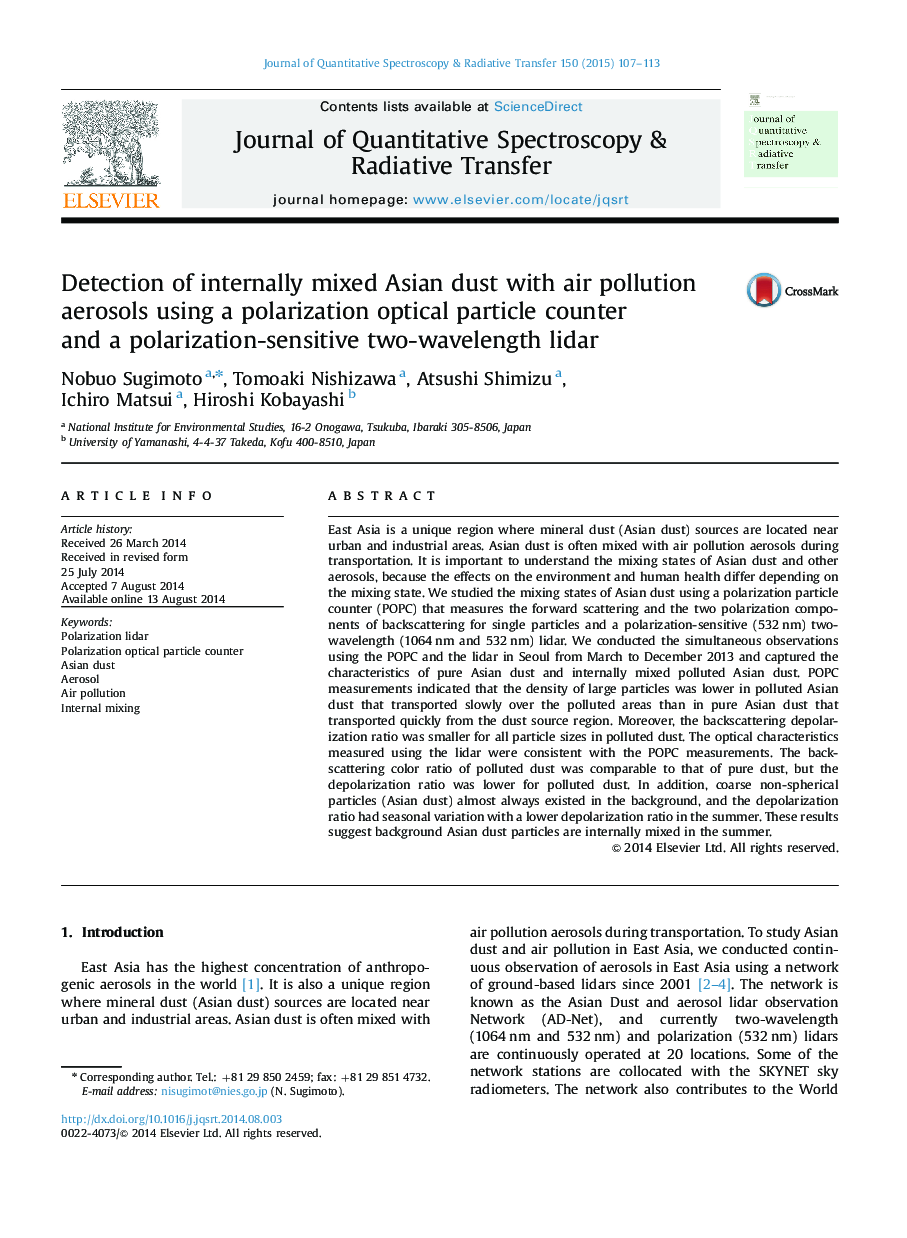| کد مقاله | کد نشریه | سال انتشار | مقاله انگلیسی | نسخه تمام متن |
|---|---|---|---|---|
| 5428177 | 1508665 | 2015 | 7 صفحه PDF | دانلود رایگان |
- Mixing states of Asian dust were studied with a polarization particle counter (POPC).
- The features of pure and internally mixed polluted Asian were revealed.
- The results with a polarization 2-wavelength lidar were consistent with POPC.
- POPC revealed coarse non-spherical particles almost always existed in the background.
- POPC revealed background dust was internally mixed in the summer.
East Asia is a unique region where mineral dust (Asian dust) sources are located near urban and industrial areas. Asian dust is often mixed with air pollution aerosols during transportation. It is important to understand the mixing states of Asian dust and other aerosols, because the effects on the environment and human health differ depending on the mixing state. We studied the mixing states of Asian dust using a polarization particle counter (POPC) that measures the forward scattering and the two polarization components of backscattering for single particles and a polarization-sensitive (532Â nm) two-wavelength (1064Â nm and 532Â nm) lidar. We conducted the simultaneous observations using the POPC and the lidar in Seoul from March to December 2013 and captured the characteristics of pure Asian dust and internally mixed polluted Asian dust. POPC measurements indicated that the density of large particles was lower in polluted Asian dust that transported slowly over the polluted areas than in pure Asian dust that transported quickly from the dust source region. Moreover, the backscattering depolarization ratio was smaller for all particle sizes in polluted dust. The optical characteristics measured using the lidar were consistent with the POPC measurements. The backscattering color ratio of polluted dust was comparable to that of pure dust, but the depolarization ratio was lower for polluted dust. In addition, coarse non-spherical particles (Asian dust) almost always existed in the background, and the depolarization ratio had seasonal variation with a lower depolarization ratio in the summer. These results suggest background Asian dust particles are internally mixed in the summer.
Journal: Journal of Quantitative Spectroscopy and Radiative Transfer - Volume 150, January 2015, Pages 107-113
